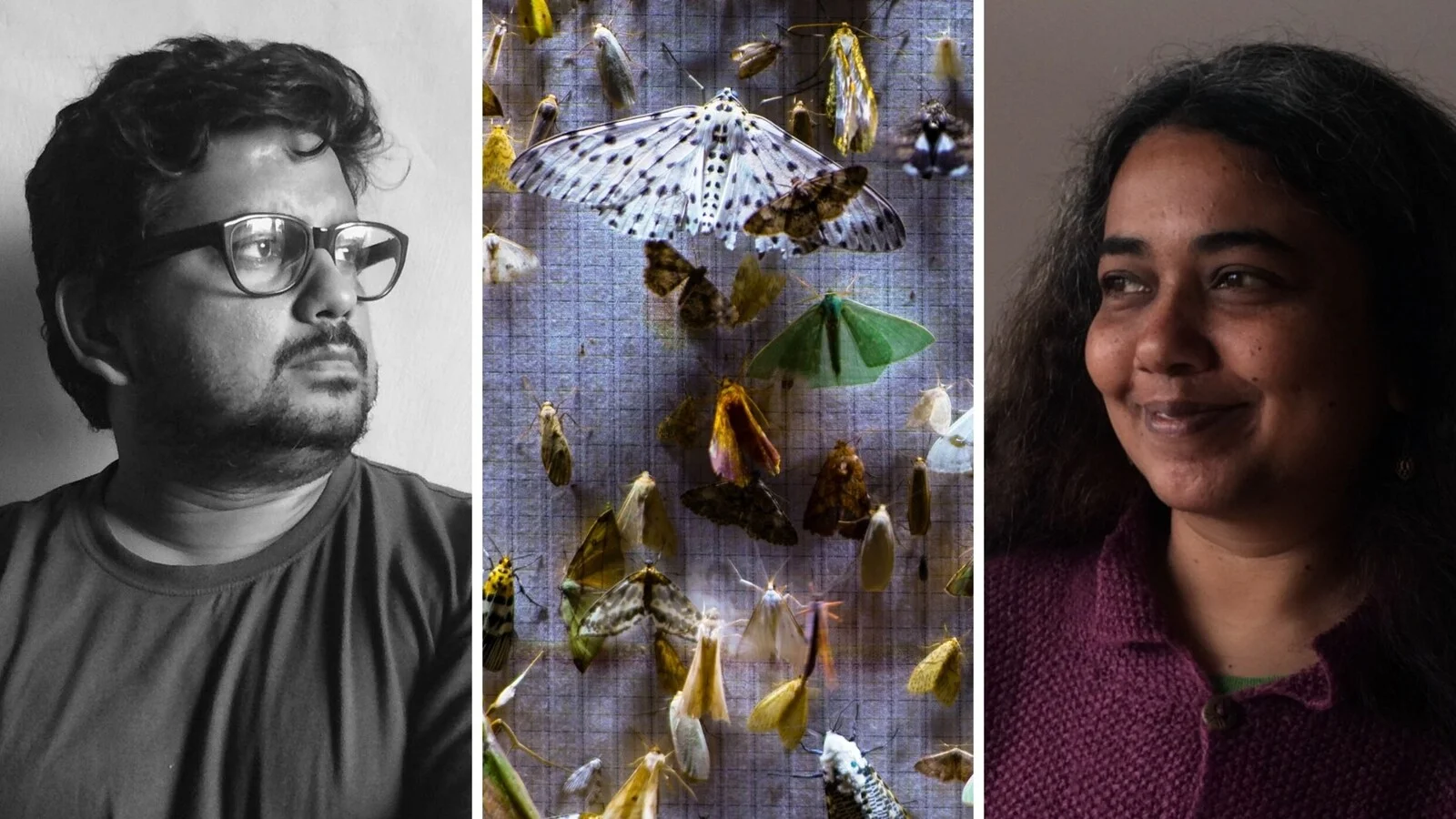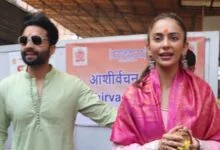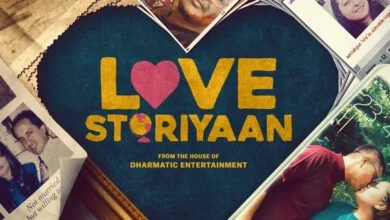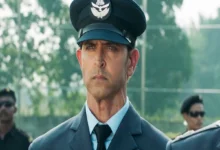Anirban Dutta and Anupama Srinivasan on Nocturnes premiering at Sundance helobaba.com

Nocturnes is the only documentary from India that is playing at the 2024 Sundance Film Festival. Captivating and beautifully realised, Nocturnes revolves around two curious observers – one scientist, and the other a local resident of the Eastern Himalayas, who spend days watching the moths in the mountains and studying their behavioural patterns. (Also read: From Girls Will Be Girls to Frida: 10 movies we’re most looking forward to at Sundance Film Festival 2024)

In this exclusive interview with Hindustan Times, directors Anirban Dutta and Anupama Srinivasan opened up about the design of the film, its exploration of the interconnected layers of observation within the narrative, and what it means to have its premiere at the Sundance Film Festival this year. Excerpts.
Talk to me a little bit about the origin of Nocturnes. What was it about the hawk moths- and their lives, that picked up your interest.
Anirban: It was not the hawk moth, firstly. The idea was a deeper, philosophical quest for us to make a work that would connect us back to nature. We live in Delhi, and our connection with nature, with simple things of going to a tree and getting to smell the flowers seemed to be taken away. We wanted to make a film that you would invite us to reconnect. That was the motivation. It happened so that we had a chance meeting with Mansi in one of the dhabas in Western Himalayas where we were there on an assignment. We connected with her and we felt that this was this amazing work that Mansi was doing in Arunachal Pradesh, and we wanted to go and see it. But the film originated with a quest to film around the idea that I expressed.
Anupama: Actually, when we met Mansi we didn’t know much about moths at all. So it’s only the way she was describing her work, how she puts up the white screen and the moths come and get attracted to the lights that she puts up… and all these glorious sizes and shapes. So the way she was explaining, that attracted us, and then of course we read up about moths after that and learnt much more during the making of the film.
Nocturnes is about the art of observation and anticipation. Did you always have a sense of the subject of the film, and how their observation would inform the narrative?
Anupama: That’s a really great question, and very central to the film. The film is in a way, at least in parts, of us observing them observing the moths. So, it is about the precision and focus and attention we give to looking. That is also what we want for the audience to look at the film with more attention than one would normally do. Its not like, ‘Oh another insect!’ But to look more carefully, at the world, so that is really central to the film. These things evolve as we go along. When we saw the attention with which every night Mansi would go and look at the screen, that was also sort of the part where we would wonder what is she looking at so closely. We were very moved by that attention actually, that somebody is so focused about their work. That definitely did inspire our way of looking as well.
The other aspect was the repetition. The rigour of science, you know, where they have to put up the screen every night. So for us, we wanted to represent that rigour but in an interesting way so that it does not become boring for the audience. So, every moth screen night has a little story around it, very gently told. One moth night, nothing happens and no moths come and they just keep waiting and they have to pack up and go. So these were the little stories within the story that we wove into.
What was the shooting schedule like? While I was watching, I kept on wondering whether the crew was always there with the team, every 200 metres as mentioned. Or was it more flexible around the observational style?
Anirban: One thing that we have to understand is that documentary filmmaking is an interpretation of reality. It is not to always cover it like a new story. So we were always trying to see things more intently, and with closer observation. We followed their work but every time we were doing the next 200 m, we were trying to ask ourselves what are we looking at here now. As Anupama said, the scientific process was the motivation, but the exploration and the cinematic form that evolved was our interpretation of what we were looking at. So you see that at many points, we go away from the science work and stay with the tree, or stay with a forest to leave them. So it is not really like we have to be with them. They might have gone away and the moth screen is left and we stay and linger on the moth screen. So, its a definitive film about gaze. Its a definitive film about looking.
The other thing was about temporality. So, the time you spend looking, you also listen more. And if you listen, you look more. There is an interconnectedness, and our quest is to create an experience that goes beyond the story. To create an experience that only Cinema can do. Which is when the image and the sound comes together and immerses you in something more deeper.
I am also fascinated by the way Nocturnes is not your typical Nature-wildlife documentary. Nor is it about a noble effort about a group of people doing something spectacular or unheard of. It just exists as its own kind of mystery, where not everything is spelled out. How important was it for both of you not to underline or spell out every muscle of the narrative?
Anupama: Brilliant question, and thank you! You are our ideal viewer (smiles). We are very, very resistant to overstating, which seems to be the norm in most of the documentaries or films, where everything has to be underlined so that everybody gets it and more. For us, we feel that, ‘Jitna aapko samajh mein aa raha hein theek hain (Howsoever you understand it, that’s okay)!’ Everybody will get it at their own level, and from their own. That is perfectly okay, and even if you did not understand something, that’s also fine. So I think it is more an opportunity to experience something. It is not a typical anything, and when I watched the film, I was like, ‘Oh this is a little bit challenging for the viewer because it is not following any template.’
That is a decision that Anirban and I made very consciously. Definitely not the template of nature films, where there are pictures, and we did not want to have this heroic effort, as you mentioned, with a scientist or a group of people doing something so amazing, and we are supposed to stand up and clap at the end of the film. The philosophy is much bigger and deeper than lauding a noble effort. Not to take away anything from Mansi’s effort- I think what scientists do is incredible. Much more than what documentary filmmakers do, the kind of effort they put in! (smiles) But our intention was something else, and you got it totally. That understating, just to give a little bit of information to take you to the next level, but also by keeping the story very minimal, along with the drama, we are forcing the viewer to look and experience other things which normally one would not because they are so caught up in what they are being told.
Anirban: I would like to add to that, and say that our motivation was also to challenge the anthropocentric gaze. Where human beings are the most superior things. When we went to that place, we saw ourselves as very little. In that gigantic forest, you see yourself as a tiny thing. And as you see in the film, the human knowledge, and the great science we know of, where the scientist puts up the moth screen- many nights they fail. And one of them says that we put up this screen thinking that the moths will come and this place is humanised. It will take us decades to understand how the moths look. That contextualizes how little we know.
One also needs to understand that any science that happens is part of a process first. There is rigour, and our film is a love letter to this process of science. It is also a love letter to this beautiful forest, where one experiences something almost like music. One that cannot be articulated in words.
It is fitting to underline the fact that Indian documentaries, or narrative non-fiction as a genre, is having a moment of their own in the last couple of years. What a great way to begin this journey at Sundance, which is such a strong launchpad for the title. What are you looking forward to at the film festival?
Sundance Film Festival is an amazing platform, and it is a dream for any non-fiction filmmaker to launch their film here. There are no bigger platforms than this. It is an amazing achievement that four Indian films- Writing with Fire, All That Breathes, Against the Tide, and now Nocturnes, have been in International Competition in the World Documentary Section in consecutive four years. I think it shows how much talent we have in South Asia. There is another film from Bhutan which is there- Agents of Happiness. I would like to say that it is a moment for South Asian Cinema. I think there is incredible work happening in Nepal, then there was Joyland that came out of Pakistan. I think this is the best time for creating more collaborations, because we really can make films!
Anupama: Coming to the Sundance experience, what is so wonderful from the programming point of view is that when you see Writing with Fire and Nocturnes next to each other, and that they are both Indian films, with filmmakers who all live in Delhi, or used to live in Delhi, and that there is no expectation that it has to fit a certain template or have to be about a certain issue, or have a particular form. All of us are fighting against that ghetto-isation of filmmakers from our part of the world, where we might be expected to follow a certain template in terms of both form and content.









